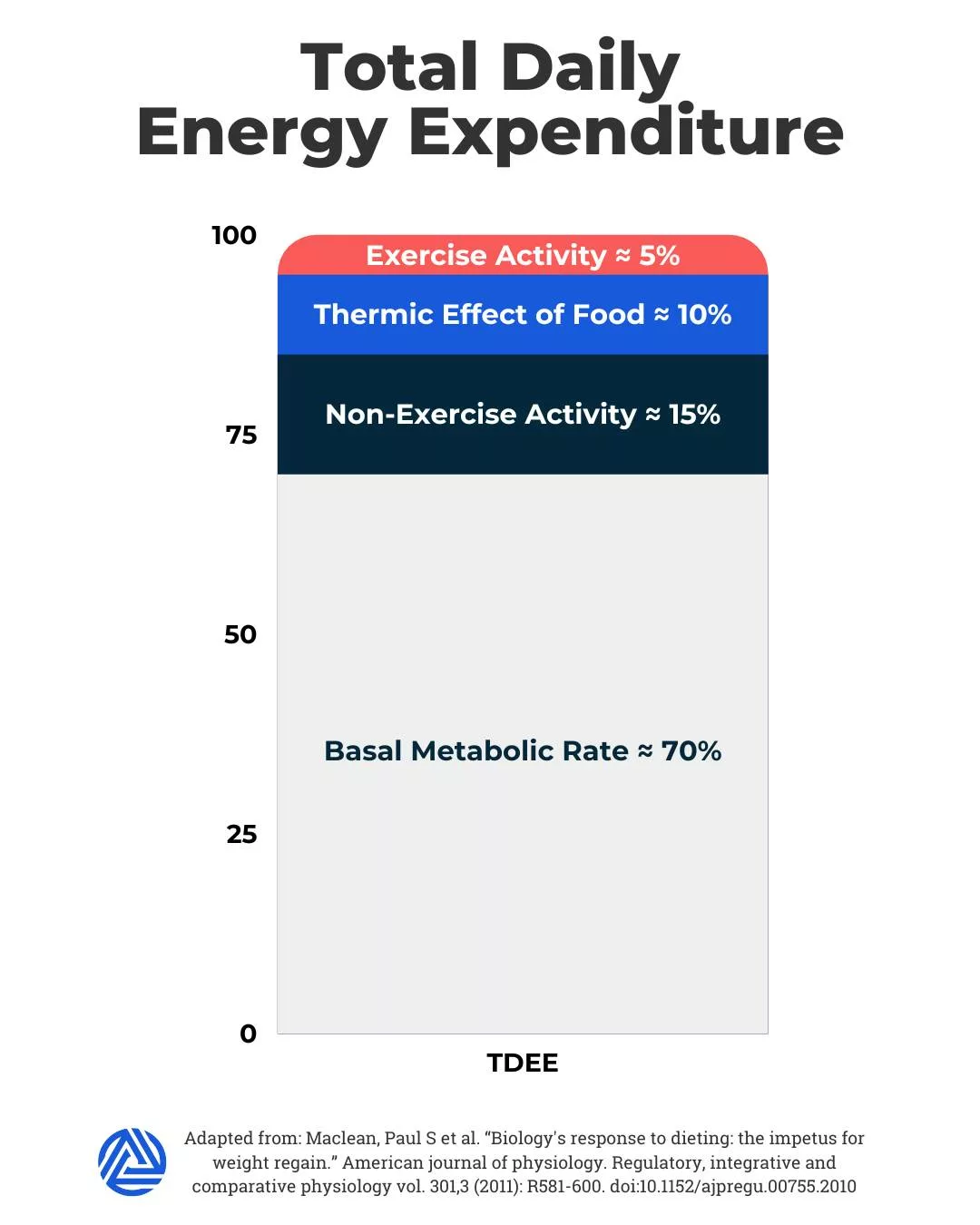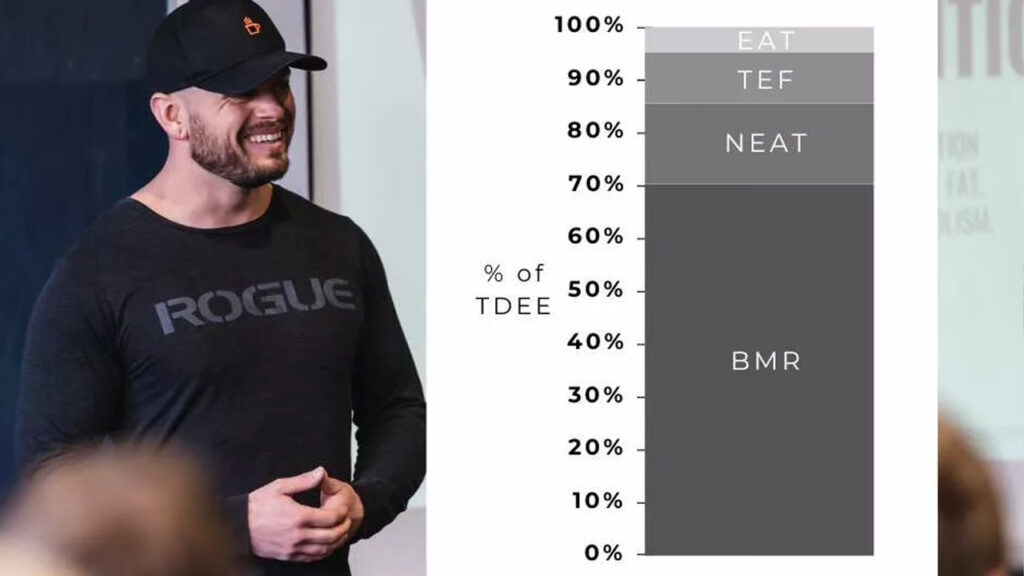TDEE in Nutrition
So you fully understand how to properly use the TDEE and macro calculator, here’s a breakdown of everything you need to know about your TDEE.
Did you know that you do NOT burn most calories at the gym?
In this mini-article we’ll break down exactly what TDEE means.
You’ll learn exactly how your body burns calories, how you can influence it to reach your goals, how to figure out how many calories you burn per day, and more.
What is TDEE in Nutrition?
Your TDEE, meaning ‘Total Daily Energy Expenditure’, refers to the total amount of calories you burn on a daily basis.
This is also the amount of calories your body requires to maintain homeostasis, a state of balance.
If your goal is to simply eat the ‘just right’ amount of calories for your body mass, activity level, etc. without weight gain or loss, then aim to eat around your maintenance calories (TDEE).
The Four Components of TDEE
Basal Metabolic Rate (BMR)
Calories burned at rest. Imagine staying in bed all day, not moving, not eating, not digesting any food.Your body would still be working doing the important job of keeping you alive and maintaining important bodily functions.
Think heart and other organs. This accounts for 70% of our TDEE.
Non-Exercise Activity Thermogenesis (NEAT)
Calories burned from walking, talking, hand gestures, twitching, etc. This accounts for 15% and is the most adaptive component of your TDEE.
⇒ Learn more about NEAT: Non-Exercise Activity Thermogenesis.
Calories burned by the digestive system. This accounts for 10% of your TDEE.
⇒ Learn more about TEF: Thermic Effect of Food
Exercise Activity Thermogenesis (EAT)
Calories burned from doing purposeful physical activity, like going for a run, lifting weights, etc. This accounts for 5% of your TDEE.

Why it’s important to know your TDEE
Knowing your TDEE allows you to figure out how much you should be eating in order to maintain, lose or gain weight.
That being said, figuring out your TDEE should be one of your top priorities before working towards any type of goal.
It’s so important that we dedicate at least a few weeks to figuring out our clients’ Total Daily Energy Expenditure before getting into a dedicated fat loss, muscle gain, performance or health-focused phase.
Everyone starts off at maintenance, and so should you.
TDEE Calculator
Figuring Out Maintenance Calories
If you haven’t yet, go ahead and calculate your estimated maintenance calories by using our TDEE calculator.
Now here’s the catch.
The only real way to find out your maintenance calories (TDEE), is by tracking your food intake and body metrics as you work your way up towards your estimated maintenance calories.
Once you have a few weeks of data, including multiple weigh-ins per week (to calculate your weekly average), step count, macros and more, you can decide on your next steps.
Adjustments should then mostly be made on the nutrition side of things.
What Is TDEE in Nutrition? – YOUR Maintenance Calories in 5 Steps
- For the next week or so, track your food intake (our online fat loss clients all use Cronometer).
- Important: Don’t change anything. Right now is not the time to ‘do good’ yet.
- Also make sure to weigh yourself daily. Doing this will teach you how normal daily weight fluctuations really are, plus it’ll show you if your weight remains stable, is trending up, or down.
- Once you have at least a full week of data, look into it. How consistent is your food intake? What’s your average calorie intake? What about protein? What has your weight been doing? This will be your starting point.
- Now go ahead and calculate your TDEE. What happens next will depend on whether you were eating under, over, or around your maintenance calories.
- For about 2-4 weeks, work towards your estimated TDEE. Wanna keep it simple? Just track calories and protein. Wanna get more specific? Track macros.
- Once you’ve been eating at maintenance for a little while and you feel confident and ready to go into the next phase of your journey, go for it!
PS. Don’t worry about calories burned, it’s almost impossible to figure that out. Just focus on food and your daily step count.
PPS. I know that this stuff is easier said than done. Especially if you haven’t tracked your macros yet, just give it some time. If you do need a little more help though, feel free to DM me here and I’ll get back to you ASAP.





